The reporter learned from the press conference held by Seismological Bureau of China, the Emergency Management Department, that the National Earthquake Early Warning Project, which started construction in 2018, passed the completion acceptance on 25th, and China has built the largest earthquake early warning network in the world.
According to the press conference, the National Earthquake Early Warning Project has built five technical systems: station observation, data processing, emergency earthquake information service, communication network and technical support and guarantee. In five key early warning areas, such as North China, Southeast Coast, North-South Earthquake Belt, Middle Tianshan Mountain in Xinjiang and around Lhasa in Tibet, a second-level earthquake early warning capability was formed, and a minute-level intensity quick report capability was formed throughout the country, and the largest earthquake early warning network in the world was built.
Wang Xingzhou, Director of Monitoring and Forecasting Department of China Earthquake Administration, Emergency Management Department:This is a complex system with high-speed integration, including 33 early warning centers, nearly 20,000 different types of monitoring stations and a set of fully automated processing systems independently developed.
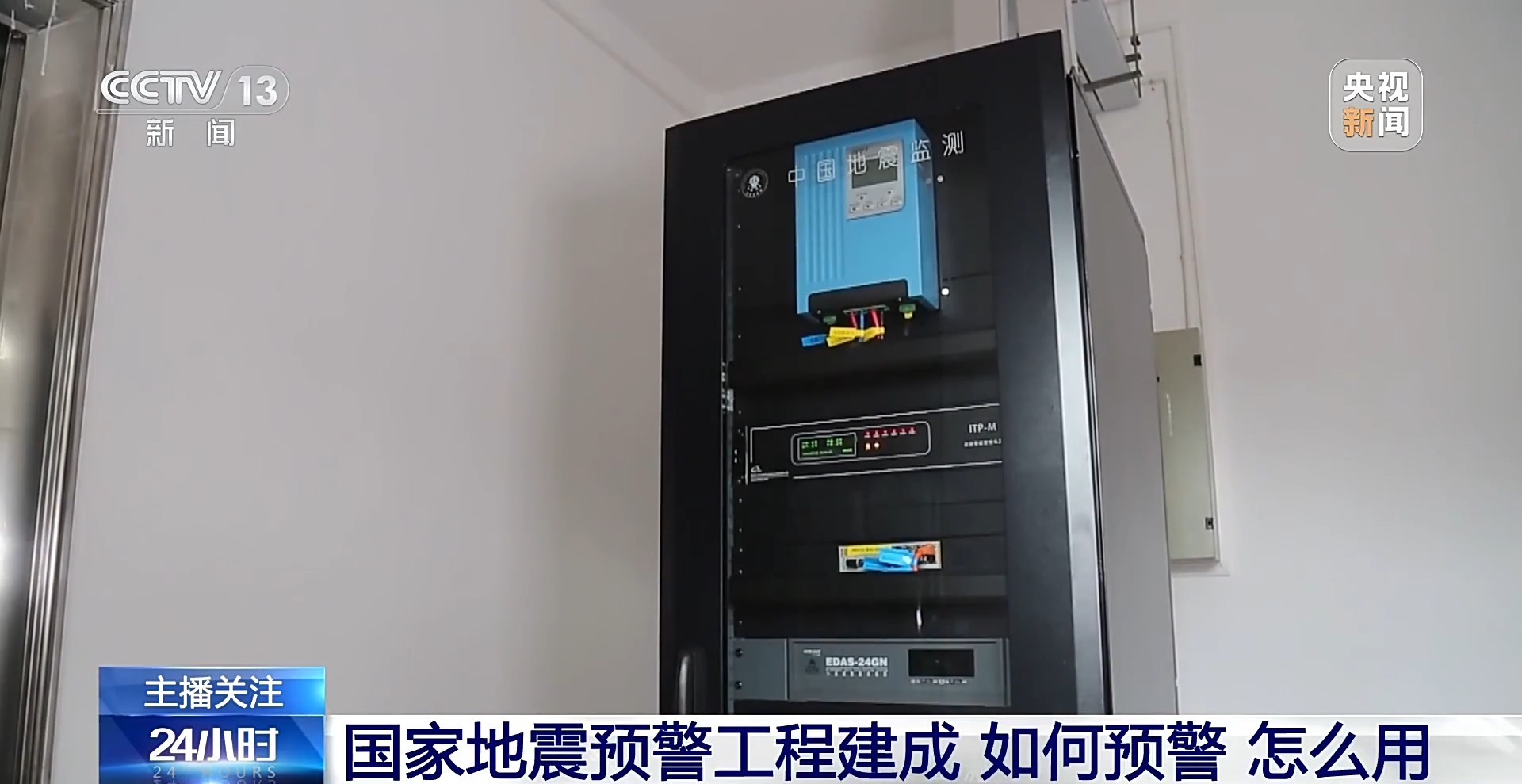
Since the implementation of the project in 2018, Seismological Bureau of China has insisted on construction, application and improvement. On September 5th, 2022, an earthquake with a magnitude of 6.8 occurred in Luding, Sichuan. The China Earthquake Early Warning Network successfully released the early warning information 6.2 seconds after the earthquake, realizing the full coverage of the second-level early warning for the 1.5 million people in the epicenter and its surrounding areas. The earthquake intensity distribution map reflecting the degree of earthquake damage is automatically generated 11 minutes after the earthquake. Compared with the previous situation that it takes several days or longer to rely on manual field investigation, the output time is significantly enhanced, which provides strong support for government earthquake relief, industry emergency disposal and public emergency avoidance.
Zhaomin Yin, Deputy Director of Earthquake Administration of China, Emergency Management Department:It has realized the leap-forward development from minute-level earthquake quick report to second-level earthquake early warning, and its overall function and performance have reached the world advanced level. The completion and acceptance of the project marks that the project has been transferred from the construction stage to the full-scale operation, and will formally provide earthquake early warning and intensity quick reporting information services to the whole society.
The project has built a three-level earthquake emergency information service of "country, province and city", which has the fast service ability of second-level coverage of 100 million users through special terminals and media channels such as radio, television and WeChat. Through customized services, the application demonstration of earthquake early warning information will be completed in railway, pipe network, power grid, nuclear power and gas industries.
Early warning and non-prediction use seismic wave velocity difference to give an alarm.
What’s the difference between earthquake early warning and earthquake prediction? How does it beat the seismic wave? What are the difficulties in realizing accurate earthquake early warning?
Ma Qiang, Chief Engineer of National Earthquake Early Warning Project:Earthquake early warning and earthquake prediction are two completely different concepts. By earthquake prediction, we mean that before an earthquake occurs, we determine the possible time, place and size of future earthquakes according to relevant observation data and research. Earthquake early warning is something after the earthquake. More precisely, when the underground fault has just started to rupture, but its seismic wave has not spread, we will deal with it quickly to give an alarm.
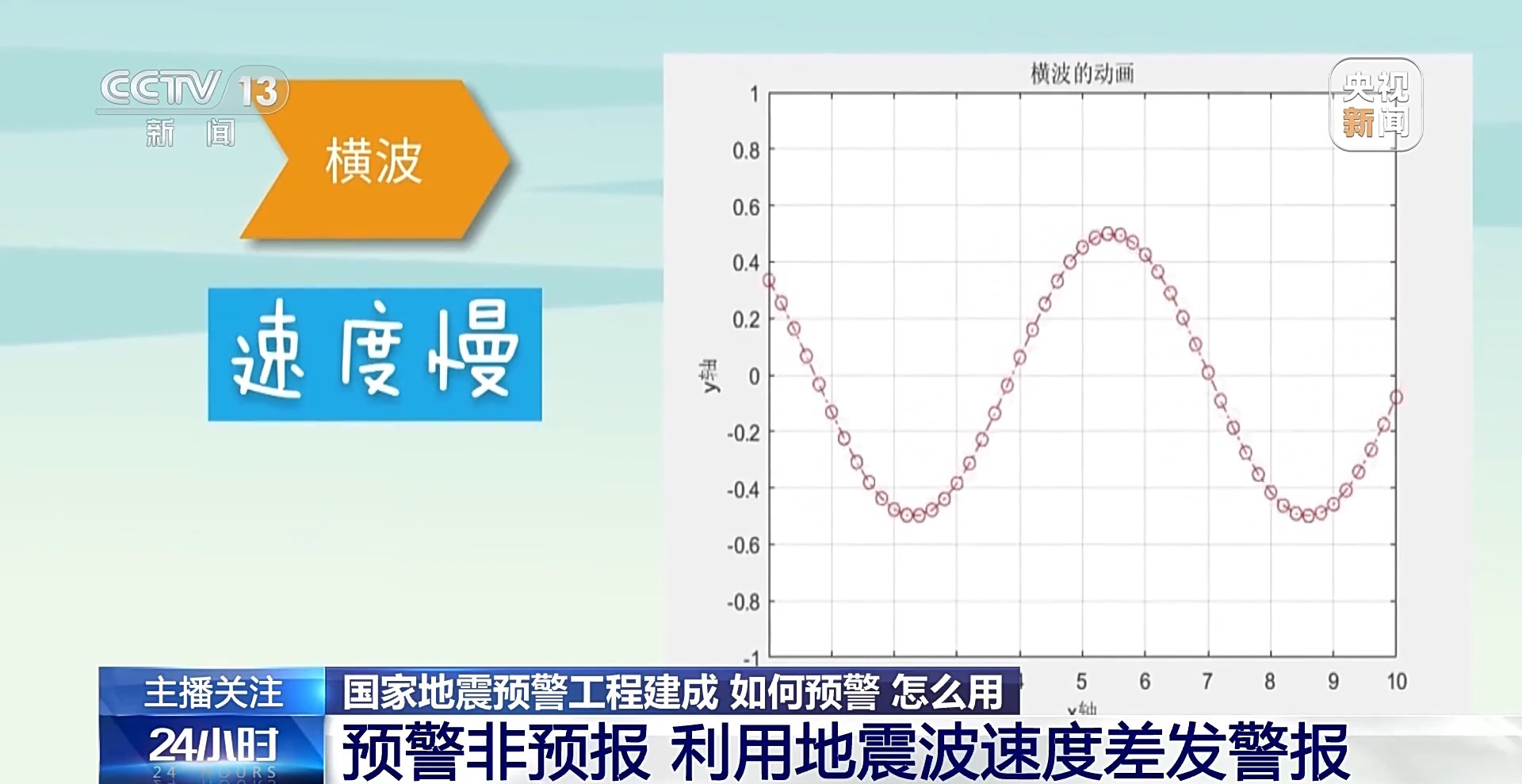
When an earthquake occurs, both longitudinal waves and shear waves will be generated.Longitudinal waves reach the ground first, causing the ground to vibrate up and down, which is less destructive.;Shear waves are shear waves, which make the ground vibrate back and forth, left and right, and are destructive.The propagation speeds of the two waves are different. The longitudinal wave is about 6 kilometers per second, and the shear wave is only about 3.5 kilometers per second. The longitudinal wave always beats the shear wave.
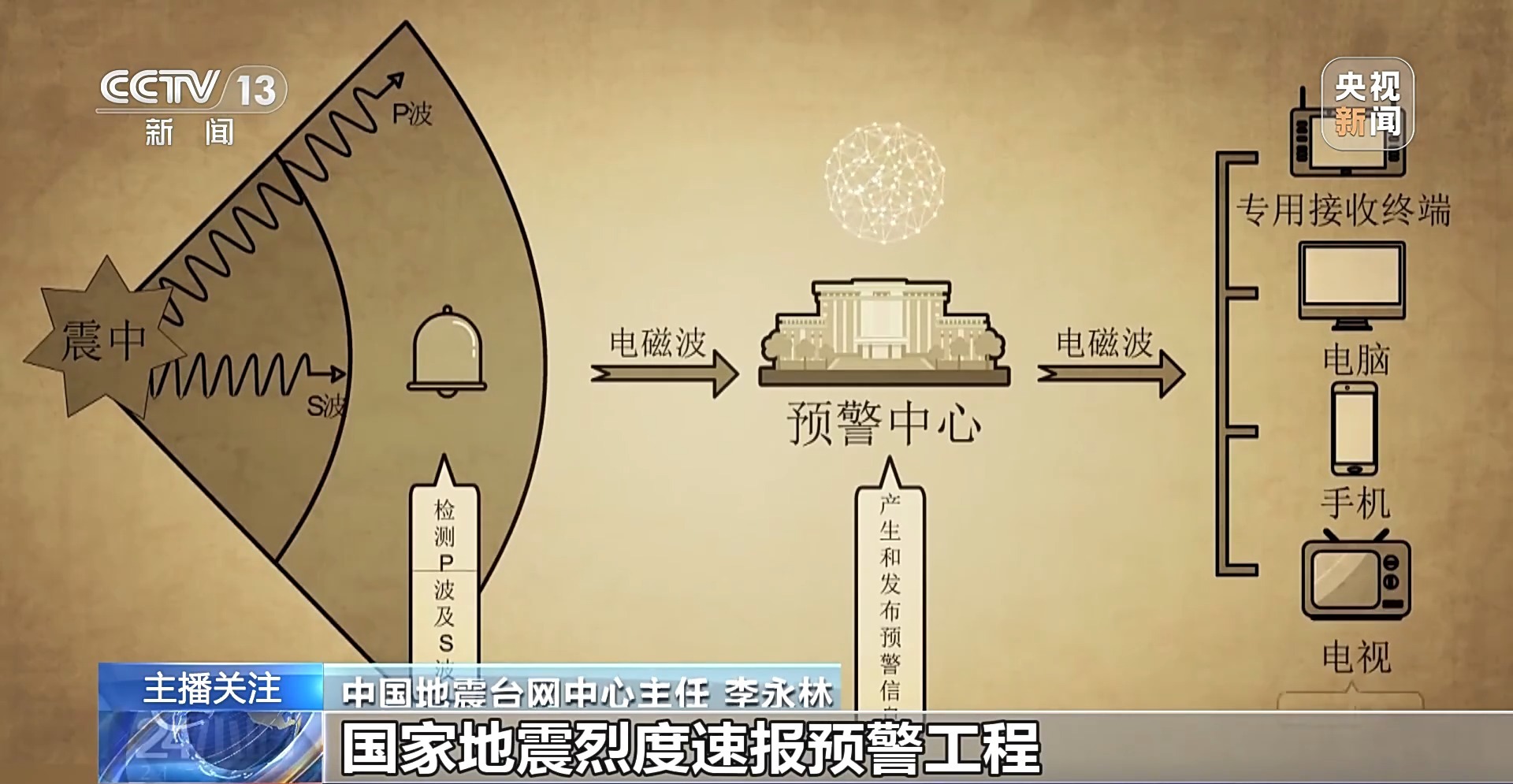
After the intensive earthquake monitoring network captures the "longitudinal wave" signal, it will quickly determine the magnitude, intensity, focal depth and other related data, and with the help of the characteristics that electromagnetic waves travel faster than seismic waves, it will send early warning information to all terminals before the arrival of shear waves.
Li Yonglin, Director of China Seismological Network Center:The national earthquake early warning project has built an earthquake early warning network covering the whole country.Key early warning areaFirst reportIt takes only 7 seconds on average., atGeneral early warning areaFirst reportIt takes 10 to 30 seconds., will strive for a few seconds to dozens of seconds of warning time for the target users before the destructive earthquake waves arrive.

The principle and technical requirements of earthquake early warning determine that it also has certain limitations. It takes time for the early warning technology system to capture seismic waves, automatically make judgments and decisions and give an alarm. During this time, it is too late to give an early warning within the range where the destructive shear waves spread, so there is an early warning blind zone in a certain range near the epicenter. Moreover, the more serious the damage is, the shorter the warning time can be provided, and the damage in the area with long warning time is relatively light. In addition, because the recording time of seismic waves used in earthquake early warning is too short and the information of source rupture is insufficient, the measured magnitude is often deviated from the actual magnitude. As a fully automatic real-time system, there are still risks of false positives and false negatives.
Ma Qiang, Chief Engineer of National Earthquake Early Warning Project:China is one of the few countries with large-scale early warning capability. Compared with Japan, Mexico, the United States and other countries, China’s early warning coverage is larger, more effective, more stable, and serves more people. The overall function and performance have reached the world advanced level.
Early warning several seconds in advance can effectively avoid risks and reduce disasters.
Earthquake early warning is an alarm issued a few seconds or dozens of seconds before the arrival of destructive seismic waves after an earthquake. How effective can this short warning of a few seconds play?
On August 6, 2023, 7.5 seconds after the earthquake of magnitude 5.5 occurred in Shandong Plain, the national railway earthquake information exchange platform received the earthquake warning information issued by the national early warning project, and several passenger trains took emergency braking measures.
Zhang Geming, Principal Investigator of china academy of railway sciences Group:The early warning of high-speed railway earthquake and emergency handling of high-speed train-ground linkage have been realized. This system has been fully promoted and applied in newly-built high-speed railways in China, and has also been applied in Jakarta-Bandung High-speed Railway.

Although the earthquake warning is only a few seconds, every second of earthquake risk avoidance and disaster reduction is precious. One second in advance, the solenoid valve can be closed, two seconds in advance, the nuclear power plant can be stopped urgently, and three seconds in advance, many chemical plants can be in a safe state. Using the warning time of several seconds to tens of seconds provided by the earthquake early warning system, major infrastructure and lifeline projects can take emergency measures, such as closing gas pipelines, shutting down nuclear reactors and stopping the operation of precision instruments in time to avoid secondary disasters.
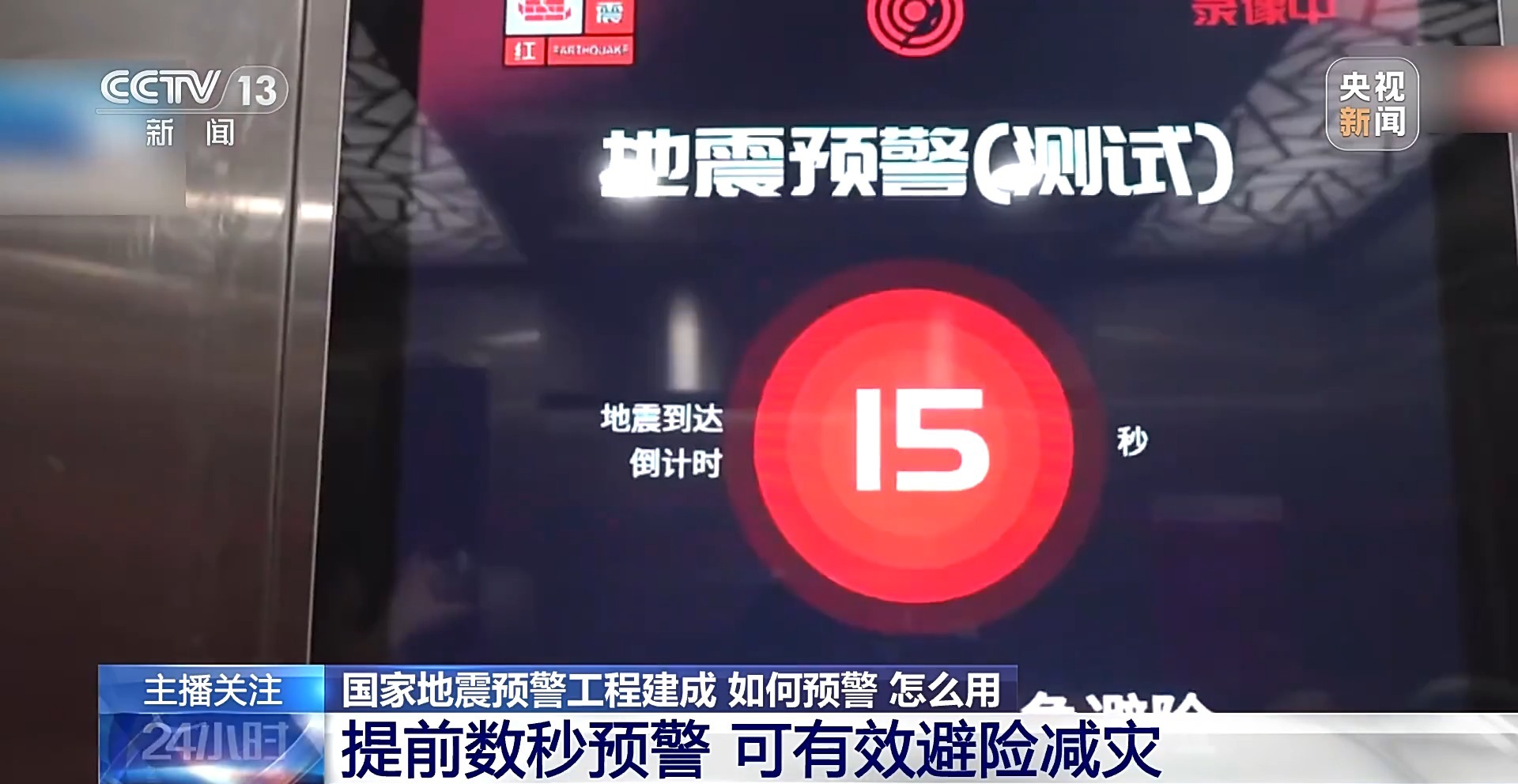
Using the earthquake warning time, the public can take shock-proof measures to reduce casualties, and the operating room can also take emergency measures in advance to avoid surgical errors. The elevator earthquake switch developed by Hubei Seismological Bureau can stop at the nearest floor after receiving the earthquake warning information, and has been widely used in high-rise elevators in Hubei and Anhui.
Ma Qiang, Chief Engineer of National Earthquake Early Warning Project:If we transform this gas alarm device, it can automatically cut off the gas after receiving our earthquake warning information. With the extensive application of our earthquake warning information and the promotion of related technologies, we ordinary people can feel that these earthquake warning information will be more and more closely related to individuals.
Multi-channel earthquake warning, wide coverage and quick access
After the national earthquake early warning project is fully completed, earthquake early warning information services can be provided to the public in various ways.The WeChat applet earthquake early warning service launched by the National Emergency Broadcasting of Central Radio and Television General Station will also be launched nationwide in the near future.
Zico Hau, a researcher at China Seismological Network Center:After the completion of this early warning project, we have provided early warning information services to the people through three main channels, including service terminals, emergency broadcasting and some mobile terminals. At present, we have basically possessed the coverage of hundreds of millions of users and the ability to reach public services in seconds.
The earthquake early warning service terminal can obtain earthquake early warning information from the earthquake department through the Internet, and estimate and calculate the earthquake intensity and possible impact according to its own position, and then send out an alarm and countdown through its own tweeter and sound photoelectric alarm device to remind the surrounding public to take emergency measures. At present, primary and secondary schools in key areas of Yunnan, Sichuan, Fujian and other places have achieved full coverage of service terminals, helping the campus to stage a "textbook" type of safe-haven disposal in many earthquakes.
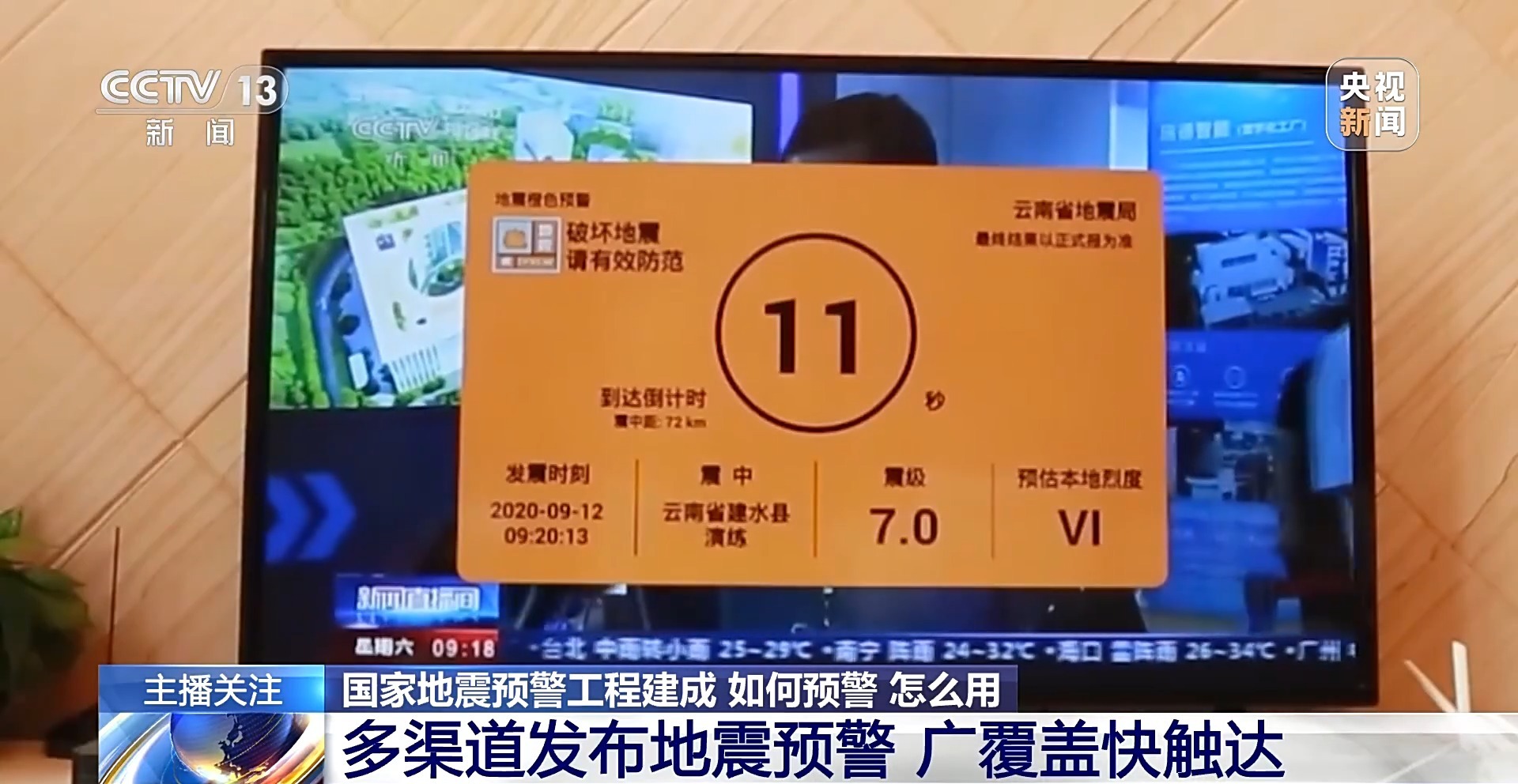
In 2022, the Seismological Bureau of China and the State Administration of Radio, Film and Television established a coordination mechanism for earthquake early warning and emergency broadcasting. The public can receive earthquake early warning information through television, radio, "village speakers" and IPTV.

The public can also receive earthquake warning information by downloading earthquake warning APP from mobile phones and the built-in functions of the operating system based on third-party forwarding.The "China Seismological Network" national WeChat early warning service jointly launched by China Seismological Network Center, National Emergency Broadcasting of Central Radio and Television General Station and Tencent will be launched soon.When there is an earthquake that may cause destructive effects, WeChat will issue a full-screen warning to continuously remind users to take timely risk-avoidance measures to reduce the impact of earthquake disasters. Earthquakes with different degrees of influence correspond to different warning colors and prompts. When the earthquake has a small impact, it is only prompted in the WeChat service notice to reduce the disturbance to users.
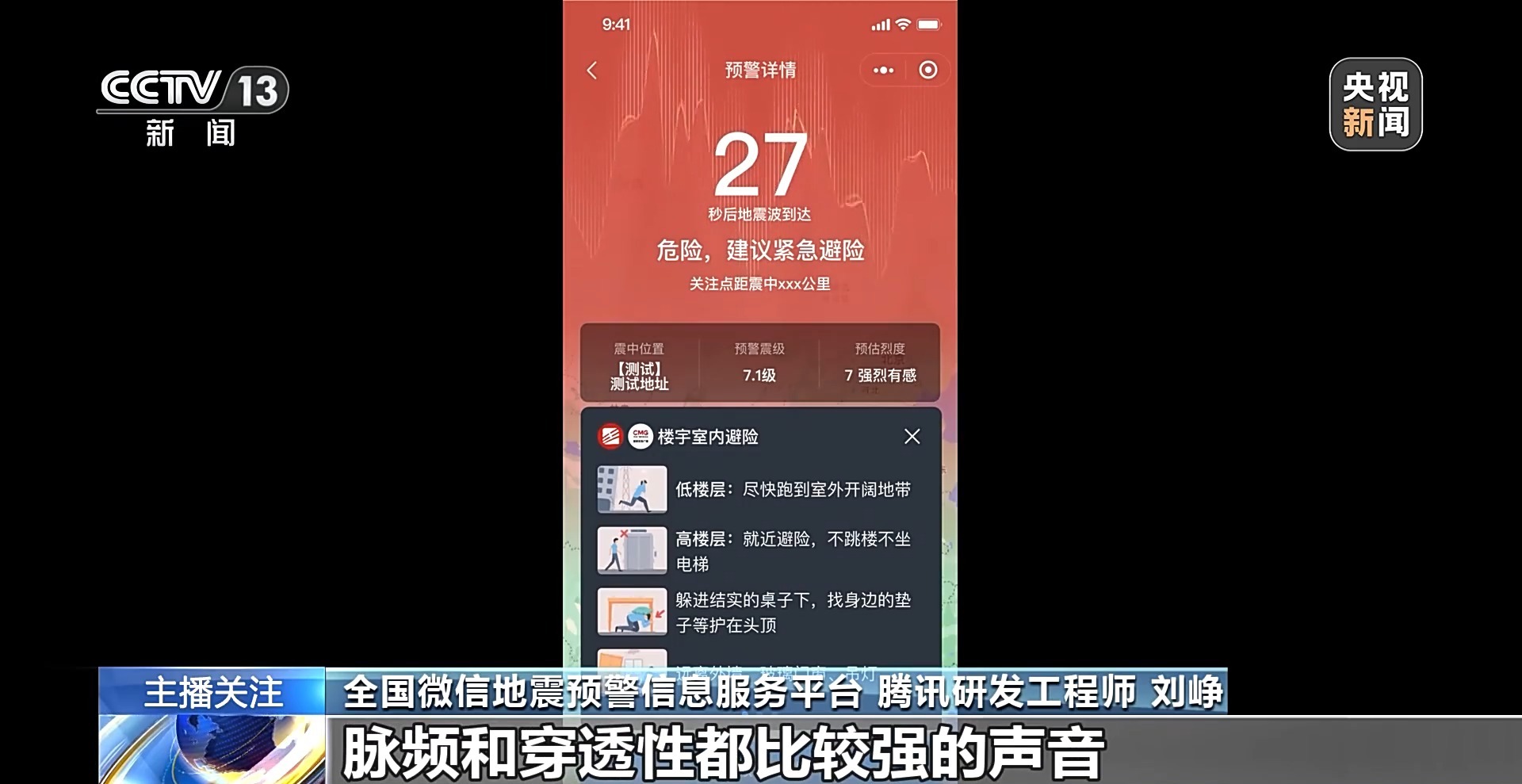
Liu Wei, R&D engineer of Tencent, the national WeChat earthquake early warning information service platform:If the user needs rescue, we also provide a high-frequency sound rescue function. Through the small program, a sound with strong pulse frequency and penetration can be emitted, which is convenient for the rescue team to rescue the rescuers.

After the launch of the WeChat applet, users search for "China Seismological Network" or "Earthquake Warning" in WeChat, enter the "China Seismological Network" applet, click "Start Earthquake Warning" and allow "Earthquake Warning Notice" and "Get Location". After successfully adding the places of concern, the earthquake warning service can be started.